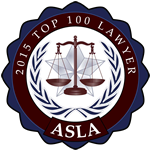“Perhaps it takes courage to raise children..” John Steinbeck

While legal definitions of parentage in New York State have been construed as both narrow and ambiguous, the definition of parentage has been subject to complicated sociological dispute for centuries. Finally, as of August 2016, the tides are turning.
Past Perspectives
Traditionally, society defined an individual’s existence by bloodline alone. Where a person’s lineage could be traced to a specific biological mother and father, these two individuals were considered the “parents”, regardless of their level of involvement in the person’s life. Such lineage could define a person’s pedigree, inheritance rights, expectations for social mobility, and beyond. While seemingly Victorian, this biological favoritism continued well into the 21st century, limited only by legal attempts to sever biological relationships, such as via adoption and the termination of parental rights.
However, throughout that same sociological history, “parenting” as an action has been construed quite differently. It was not uncommon to say that someone was “parented” by an individual other than their biological “parent”, such as a grandmother or a benevolent uncle. Few would dispute that the action of parenting, of raising a child, was quite distinct from biology. Only the court system maintained that a biological relationship could still overcome evidence of true “parenting” in a dispute over child custody and parental rights. That is, until August of 2016.
Present Progress
In 2016, the New York Court of Appeals reversed decades of precedent devaluing non-biological and non-adoptive parenting. According to precedent, non-biological and non-adoptive parents had no standing to assert rights to visitation and custody of children they parented. According to precedent, not only would they lose a child that they had parented to the child’s biological or adoptive parent, but they would have no standing to even discuss the matter. (See Matter of Alison D. v. Virginia M., 77 NY2d at 651 (1991)).
The two landmark cases, Brook B. v. Elizabeth A. and Estrelita A. v Jennifer D., specifically addressed the parenting rights of unmarried, same sex female couples who had decided to conceive and parent a child together without securing a second parent adoption to protect the non-biological parent. These couples had since decided to part ways, and the non-biological parents sought visitation and custody.
The Court of Appeals has overruled the seminal precedent in Alison D. For the first time since 1991, the Court acknowledged the need to move forward, stating “we will no longer engage in the deft legal maneuvering necessary to read fairness into an overly-restrictive definition of parent that sets too high a bar for reaching a child’s best interest and does not take into account equitable principles” and establishing that “a person who is not a biological or adoptive parent may obtain standing to petition for custody or visitation under Domestic Relations Law §70(a).
What Has Changed
- Non-biological and non-adoptive parents now have standing to seek visitation rights and custody of children that they have parented.
- While some courts may narrowly apply this to female same sex couples who planned to conceive and parent together, others may extend this precedent to same sex adoptive couples, step parents, and grandparents.
What Remains the Same
- The Court stressed that the decision is only meant to address the ability of a non-biological and non-adoptive parent to establish standing. Preference for biological parents in coming to a conclusive decision regarding visitation rights and custody may remain in a judge’s discretion.
- Second parent adoptions are still the safest method to ensure parenting rights over non biological children of same sex couples.







